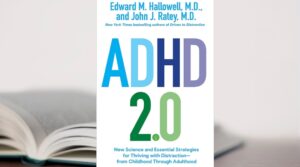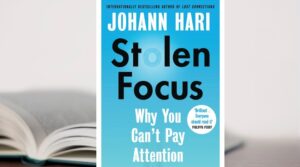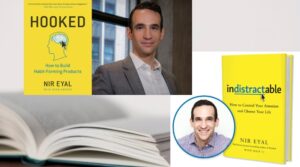The link between ADHD and Online Addictions
Does spending lots of time online cause ADHD?
Directly. It seems not.
Spending time on digital devices does reduce your ability to focus and concentrate and excessive use can cause symptoms similar to those displayed with ADHD, but using a device will not ‘give you’ ADHD.
Indirectly. It seems to.
According to Gabor Mate, ADHD is a coping mechanism that children develop when there is limited connection with their primary caregiver does not, or is not able to, respond to their immediate need for care, reassurance and comfort.
If a child does not receive an appropriate level of comfort, eye contact and their basic needs met, the child turns their focus inwards to achieve the comfort they need. It is this inward focusing that wires the brain in a non-neuro-typical way.
Historically, it was those parents who were overly stressed, emotionally overburdened or in a state of survival that did not give them the emotional and mental resources to extend the care and 1-2-1 attention a young child needs to feel secure and safe in the world.
However, since the launch of the smartphone, how many parents of young children do you see staring at their mobile screens while their young children are seeking or needing their attention?
There has been a dramatic increase in the number of children who are being diagnosed with ADHD, especially since the beginning of 2020. Is it just that we have more awareness of the condition and therefore a better ability to spot and diagnose it? OR are there simply more care-givers who are more distracted than ever before?
Does ADHD predispose you to addictions?
Directly, it does seem to.
Those with ADHD have lower overall levels of Dopamine – the anticipation-feel-good hormone. Spending time online including scrolling through social media, gaming, gambling or pornography all contribute to regular, tiny bursts of Dopamine into the system.
In their book ADHD 2.0, Dr Hallowell and Dr Ratey state that, ‘addiction of all kinds are five to ten times more common in people who have ADHD than in the general population.’ They talk about an itch that can only be scratched in certain ways. From a positive perspective, this leads to ‘adaptive, worthwhile and sustainable’ creativity, but can also lead to ‘maladaptive and destructive’ behaviour and addictions.
There are socially acceptable forms of addiction and socially unacceptable forms of addiction. Online addictions vary by category on the spectrum from social media scrolling to gaming, gambling and pornography (to name a few).
All are driven by the same Dopamine itch that needs scratching (to a greater or lesser degree).
So what can we do about it?
If you have been diagnosed with ADHD or suspect you may have ADHD, here are a few things you can try:
- Find a coach or therapist who works with adults who have ADHD to help you find different ways to manage the itch and find more creative outlets to express and capitalise on your inherent natural talents.
- Experiment with several external ‘real world’ activities that will help you build a local community and get you exercising. Increasing your coordination and creating muscle movement is shown to help a number of those diagnosed with ADHD.
- Actively seek to build stronger in-person relationships. Those who have ADHD thrive better in strong communities and have those around them who love, protect and care for them.
- Go on a digital diet. Work with others in your household to create tech house rules that purposefully limit the amount of time available to spend on digital devices.
- Delete the apps from your phone that are the hardest for you to resist. Having extra barriers in place that increase access friction to apps or websites, decreases the easy access to the mini-Dopamine hits.
In the above video, Dr Gabor Mate talks about the conditions that impact the development of children that lead to ADHD (and impulse regulation circulation and capacity).
In the below videos, Dr Hallowell talks about changing the narrative from disability and disorder to a fascinating trait. In the book he wrote alongside Dr Ratey (ADHD 2.0), he talks about ADHD being a person’s superpower.
He views ADHD as having a racing car brain with bicycle breaks. A fabulous analogy that helps those with ADHD to find ways to maximise their superpower.






